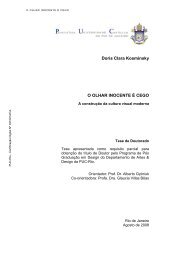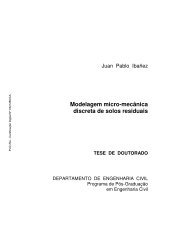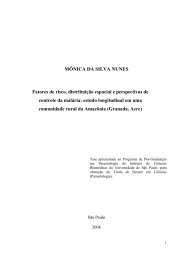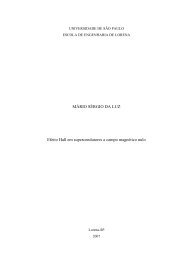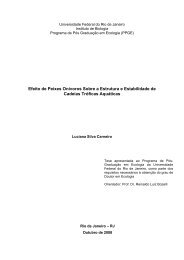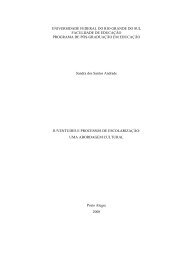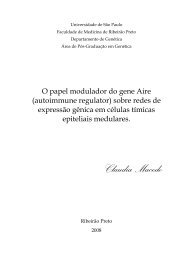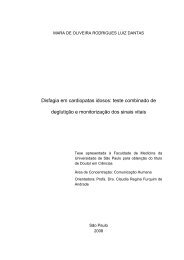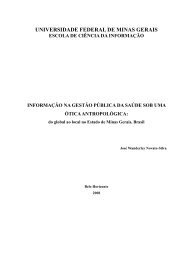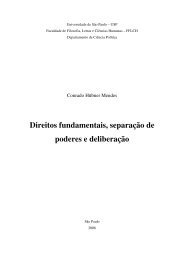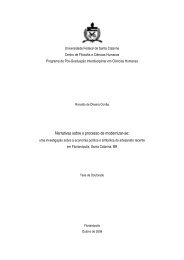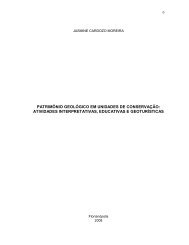1,4-Diaryl and Schiff’s base LC compounds 10031477 (2002); S. Torgova, A. Strigazzi. Mol. Cryst. liq.Cryst., 375, 61 (2002); R. Giménez, M. Pinol, J.L. Serrano.Chem. Mater., 16, 1377 (2004); M. Grell, D.D.C. Bradley.Adv. Mater., 11, 895 (1999).[4] S. Velazquez, R. Alvarez, C. Perez, F. Gago, C. De J.Balzarini, M. Camaraza. J. antivir. Chem. Chemother. 9,481 (1998); S. Palhagen, R. Canger, O. Heriksen, J.A. vanParys, M.E. Riviere, M.A. Karolchyk. Epilepsy Res., 43,115 (2001); V. Calderone. Curr. Med. Chem., 9, 1385(2002).[5] J.T. Sharp. In Synthetic applications of 1,3-dipolarcycloaddition chemistry toward heterocycles and naturalproducts, A. Padwa, W.H. Pearson (Eds), pp. 473–538,Wiley-Interscience, New York (2002).[6] S. Içli, A.S. Astley, C. Timur, O. Anaç, O. Sezer, K.Dabak. J. Lumin., 82, 41 (1999).[7] K. Sivakumar, F. Xie, B.M. Cash, S. Long, H.N.Barnhill, Q. Wang. Org. Lett., 6, 4603 (2004).[8] H.C. Kolb, M.G. Finn, K.B. Sharpless. Angew. Chem.113, 1998 (2001); H.C. Kolb, M.G. Finn, K.B. Sharpless.Angew. Chem. int. Ed., 40, 2004 (2001).[9] V.V. Rostovtsev, L.G. Green, V.V. Fokin, K.B.Sharpless. Angew. Chem. int. Ed. 41, 2596 (2002); Q.Wang, T.R. Chan, R. Hilgraf, V.V. Fokin, K.B.Sharpless. J. Am. chem. Soc., 125, 3192 (2003); Y.-M.Wu, J. Deng, X. Fang, O.-Y. Chen. J. fluorine Chem.,125, 1415 (2004).[10] H. Gallardo, F. Ely, A.J. Bortoluzzi, G. Conte. Liq.Cryst., 32, 667 (2005).[11] H. Fahmi, T. Lovell, R. Hilgraf, V.V. Rostovtsev, L.Noodleman, K.B. Sharpless, V.V. Fokin. J. Am. chem.Soc., 127, 210 (2005).[12] G. Conte, F. Ely, H. Gallardo. Liq. Cryst., 32, 1213(2005).[13] G. Conte, R. Cristiano, F. Ely, H. Gallardo. Synth.Commun., 36, 951 (2006).
Tetrahedron 63 (2007) 2851–2858Synthesis and optical/thermal properties of low molecular massV-shaped materials based on 2,3-dicyanopyrazineRodrigo Cristiano, a Eduard Westphal, a Ivan H. Bechtold, b Adailton J. Bortoluzzi aand Hugo Gallardo a, *a Departamento de Quımica, Universidade Federal de Santa Catarina, 88040-900 Florianopolis, SC, Brazilb Departamento de Fısica, Universidade Federal de Santa Catarina, 88040-900 Florianopolis, SC, BrazilReceived 1 November 2006; revised 8 January 2007; accepted 22 January 2007Available online 25 January 2007Abstract—A novel series of luminescent low molecular mass materials containing a 2,3-dicyanopyrazine central core were synthesizedthrough an esterification reaction between diphenol 10 and different aromatic carboxylic acids 1–6, containing terminal long alkyl chains.They have a similar V-shaped geometry with lack of planarity between the two arms, confirmed by the X-ray structure of the central core.The optical and thermal properties of these compounds were evaluated. They show blue fluorescence in solution (l maxem 440–480 nm) withquantum fluorescence yields (F F ) from 0.003 to 0.1 and Stokes shifts of around 90 nm. In solid state, optical band gaps (E g ) were from3.14 to 3.32 eV. Thin films of 11, 13, and 14 exhibited blue fluorescence (l maxem 430–456 nm), and 12, 15, and 16 (more bulky) displayed greenfluorescence (l maxem 488–512 nm). Most of the materials exhibited good thermal stability, exhibiting an amorphous glassy state after melting.Transparent amorphous films were easily obtained through spin coating and characterized by AFM analysis.Ó 2007 Elsevier Ltd. All rights reserved.1. IntroductionOrganic compounds that exhibit a variety of interestingoptical, electrical, photoelectrical, and magnetic propertiesin the solid state have found widespread use in a growingnumber of practical applications, including their utility asemitters in light-emitting diodes, 1 laser dyes, 2 photoconductors,3 optical switches, 4 and optical data storage devices. 5Low molecular mass materials that are able to form stablefilms are particularly interesting in such functional systemsdue to their well-defined molecular structures and molecularweights, and also because they can be easily purified.Among these materials and their organization states, twoclasses in particular have been extensively exploited: fluorescentliquid crystals, 6 as the self organizing properties ofthese materials can lead to defect-free layers with high carriermobility for electroluminescence devices, and varioustypes of amorphous molecular glass, because of their goodprocessability, transparency, and homogeneity. 7Dicyanopyrazine derivatives have been synthesized and arevaluable in a broad range of chemistry fields due to theirapplications as functional dyes, nonlinear optical materials,etc. 8 They have strong electron withdrawing ability and,Keywords: 2,3-Dicyanopyrazine; Luminescent materials; X-ray structure;Functional dyes.* Corresponding author. Fax: +55 48 3721 6850; e-mail: hugo@qmc.ufsc.brdespite possessing a small chromophoric system, they presentstrong fluorescence even in solid state. 9 In this context,our research is focused on fluorescent molecular materialscontaining electron deficient N-heterocycles that can exhibiteither liquid crystalline phases 10 or a stable glassy state foropto-electronic applications.In this paper, we report on the synthesis of a series of fluorescent2,3-dicyanopyrazine derivatives (11–16) possessinga similar V-shaped geometry 11 with some lack of planarity,in order to achieve a mesomorphic or film forming behavior.The photophysical properties in solution and in thin film,along with the thermal behavior of these compounds, werealso evaluated.2.1. Synthesis2. Results and discussionScheme 1 outlines the synthesis of the series of 2,3-dicyanopyrazinederivatives. Anisil 7 was prepared from 4-methoxybenzaldehydethrough benzoin condensation followed byhydroxyl group oxidation using CuSO 4 /pyridine. A condensationreaction of anisil 7 with diaminomaleonitrile(DAMN) in the presence of a catalytic amount of p-toluenesulfonicacid (p-TsOH) gave the 2,3-dicyanopyrazine derivative8 in good yield (90%). An attempt to achieve methyl0040–4020/$ - see front matter Ó 2007 Elsevier Ltd. All rights reserved.doi:10.1016/j.tet.2007.01.045
- Page 2 and 3:
AUTOBIOGRAFIARodrigo Cristiano nasc
- Page 5 and 6:
Rodrigo CristianoMATERIAIS MOLECULA
- Page 7 and 8:
À minha esposa Cláudia.
- Page 9 and 10:
VÍNDICEINTRODUÇÃO ..............
- Page 11 and 12:
VIILISTA DE FIGURASFigura 1. Proces
- Page 13 and 14:
IXFigura 31. Espectro de RMN de 1 H
- Page 15 and 16:
XIFigura 63. Espectros de (a) UV e
- Page 17 and 18:
XIIILISTA DE TABELASTabela 1. Os ti
- Page 19 and 20:
XVTGA - Análise termogravimétrica
- Page 21 and 22:
XVIIABSTRACTThe synthesis and chara
- Page 23 and 24:
Introdução 19A química orgânica
- Page 25 and 26:
Introdução 21fenômenos possuem t
- Page 27 and 28:
Introdução 23elétrico é aplicad
- Page 29 and 30:
Introdução 25(Figura 3). A verdad
- Page 31 and 32:
Introdução 27investigar a conexã
- Page 33 and 34:
Introdução 29com um banco de dado
- Page 35 and 36:
Introdução 31descrever a estrutur
- Page 37 and 38:
Introdução 33Nas fases esméticas
- Page 39 and 40:
Introdução 35OHC 6 H 13OOOC 11 H
- Page 41 and 42:
Introdução 37O interesse na sínt
- Page 43 and 44:
Introdução 39Figura 17. Represent
- Page 45 and 46:
Introdução 41Figura 19. Esquema d
- Page 47 and 48:
Introdução 43mais comum nesses ma
- Page 49 and 50:
Introdução 45formam estruturas su
- Page 51 and 52:
Introdução 47do material quando n
- Page 53 and 54:
Introdução 491,3,4-oxadiazolN NOO
- Page 55 and 56:
Introdução 51R 2 OR 1OR 2N N ONON
- Page 57 and 58:
Introdução 53estável através de
- Page 59 and 60:
RESULTADOS EDISCUSSÃO
- Page 61 and 62:
Resultados e Discussão 57aromátic
- Page 63 and 64:
Resultados e Discussão 59Esquema 3
- Page 65 and 66:
Resultados e Discussão 61mantendo-
- Page 67 and 68:
Resultados e Discussão 63(ν C≡C
- Page 69 and 70:
Resultados e Discussão 65funcional
- Page 71 and 72:
Resultados e Discussão 67ROORROOO4
- Page 73 and 74:
Resultados e Discussão 69Uma rota
- Page 75 and 76:
Resultados e Discussão 71baNNOc d
- Page 77 and 78:
Resultados e Discussão 73Tabela 3.
- Page 79 and 80:
Resultados e Discussão 75Para o co
- Page 81 and 82:
Resultados e Discussão 77porque o
- Page 83 and 84:
Resultados e Discussão 795. CLs cu
- Page 85 and 86:
Resultados e Discussão 81gerado a
- Page 87 and 88:
Resultados e Discussão 835.2. Prop
- Page 89 and 90:
Resultados e Discussão 85(a)Cr-CrC
- Page 91 and 92:
Resultados e Discussão 87(a)(b)Fig
- Page 93 and 94:
Resultados e Discussão 89Esses com
- Page 95 and 96:
Resultados e Discussão 91catalíti
- Page 97 and 98:
Resultados e Discussão 93a complet
- Page 99 and 100:
Resultados e Discussão 95A banda l
- Page 101 and 102:
Resultados e Discussão 97constante
- Page 103 and 104:
Resultados e Discussão 99A não-pl
- Page 105 and 106:
Resultados e Discussão 101(a)(b)T
- Page 107 and 108:
Resultados e Discussão 103(e)trans
- Page 109 and 110:
Resultados e Discussão 1056.5. Pro
- Page 111 and 112:
Resultados e Discussão 107composto
- Page 113 and 114:
Resultados e Discussão 109composto
- Page 115 and 116:
Resultados e Discussão 1117. Tris-
- Page 117 and 118:
Resultados e Discussão 113Esquema
- Page 119 and 120:
Resultados e Discussão 115A caract
- Page 121 and 122:
Resultados e Discussão 117ppm rela
- Page 123 and 124:
Resultados e Discussão 1197.2. Est
- Page 125 and 126:
Resultados e Discussão 121Figura 7
- Page 127 and 128:
Resultados e Discussão 123N21-N22
- Page 129 and 130:
Resultados e Discussão 125método
- Page 131 and 132:
Resultados e Discussão 127após lo
- Page 133 and 134:
Resultados e Discussão 129baseado
- Page 135 and 136:
Resultados e Discussão 131aquecime
- Page 137 and 138:
Resultados e Discussão 133composto
- Page 139 and 140:
Resultados e Discussão 1357.5. Est
- Page 141 and 142:
Resultados e Discussão 137estabili
- Page 143 and 144:
Conclusões 1398. CONCLUSÕESEm ger
- Page 145 and 146:
SEÇAO EXPERIMENTAL
- Page 147 and 148:
Seção Experimental 143respectivam
- Page 149 and 150:
Seção Experimental 1457,08 (m, 2H
- Page 151 and 152:
Seção Experimental 147K 2 CO 3 (7
- Page 153 and 154:
Seção Experimental 149H, -CH 2 NC
- Page 155 and 156:
Seção Experimental 1512918, 2851,
- Page 157 and 158:
Seção Experimental 153Esse compos
- Page 159 and 160:
Seção Experimental 155Espectro de
- Page 161 and 162:
Seção Experimental 157Este compos
- Page 163 and 164:
Seção Experimental 159H 21 C 10 O
- Page 165 and 166:
Seção Experimental 16114,36; 22,9
- Page 167 and 168:
Seção Experimental 163H), 6,85 (d
- Page 169 and 170:
Seção Experimental 165NCNCNNHO59O
- Page 171 and 172:
Seção Experimental 167H 21 C 10 O
- Page 173 and 174:
Seção Experimental 169(sílica-ge
- Page 175 and 176: Seção Experimental 171dodeciloxib
- Page 177 and 178: Seção Experimental 173NCNCNNOOOOC
- Page 179 and 180: Seção Experimental 175Análise el
- Page 181 and 182: Seção Experimental 177Espectro de
- Page 183 and 184: Seção Experimental 179131,6; 132,
- Page 185 and 186: Seção Experimental 181Espectro de
- Page 187 and 188: Seção Experimental 183fornecendo
- Page 189 and 190: Seção Experimental 185Espectro de
- Page 191 and 192: Referências bibliográficas 18710.
- Page 193 and 194: Referências bibliográficas 189pha
- Page 195 and 196: Referências bibliográficas 19149.
- Page 197 and 198: Referências bibliográficas 19371.
- Page 199 and 200: Referências bibliográficas 19596.
- Page 201 and 202: Referências bibliográficas 197120
- Page 203 and 204: 382 R. Cristiano et al.acetylenes 1
- Page 205 and 206: 384 R. Cristiano et al.Scheme 2. Re
- Page 207 and 208: 386 R. Cristiano et al.Table 3. Sum
- Page 209 and 210: 388 R. Cristiano et al.117.0-125.4u
- Page 211 and 212: 390 Hockey stick-shaped LC compound
- Page 213 and 214: LSYC146630 LSYC_036_007 Techset Com
- Page 215 and 216: LSYC146630 LSYC_036_007 Techset Com
- Page 217 and 218: LSYC146630 LSYC_036_007 Techset Com
- Page 219 and 220: LSYC146630 LSYC_036_007 Techset Com
- Page 221 and 222: 998 R. Cristiano et al.block contai
- Page 223 and 224: 1000 R. Cristiano et al.(a)(b)Figur
- Page 225: 1002 R. Cristiano et al.4.3.2. 1-(4
- Page 229 and 230: R. Cristiano et al. / Tetrahedron 6
- Page 231 and 232: R. Cristiano et al. / Tetrahedron 6
- Page 233 and 234: R. Cristiano et al. / Tetrahedron 6
- Page 235 and 236: COMMUNICATIONwww.rsc.org/chemcomm |
- Page 237: In summary, we performed the synthe



